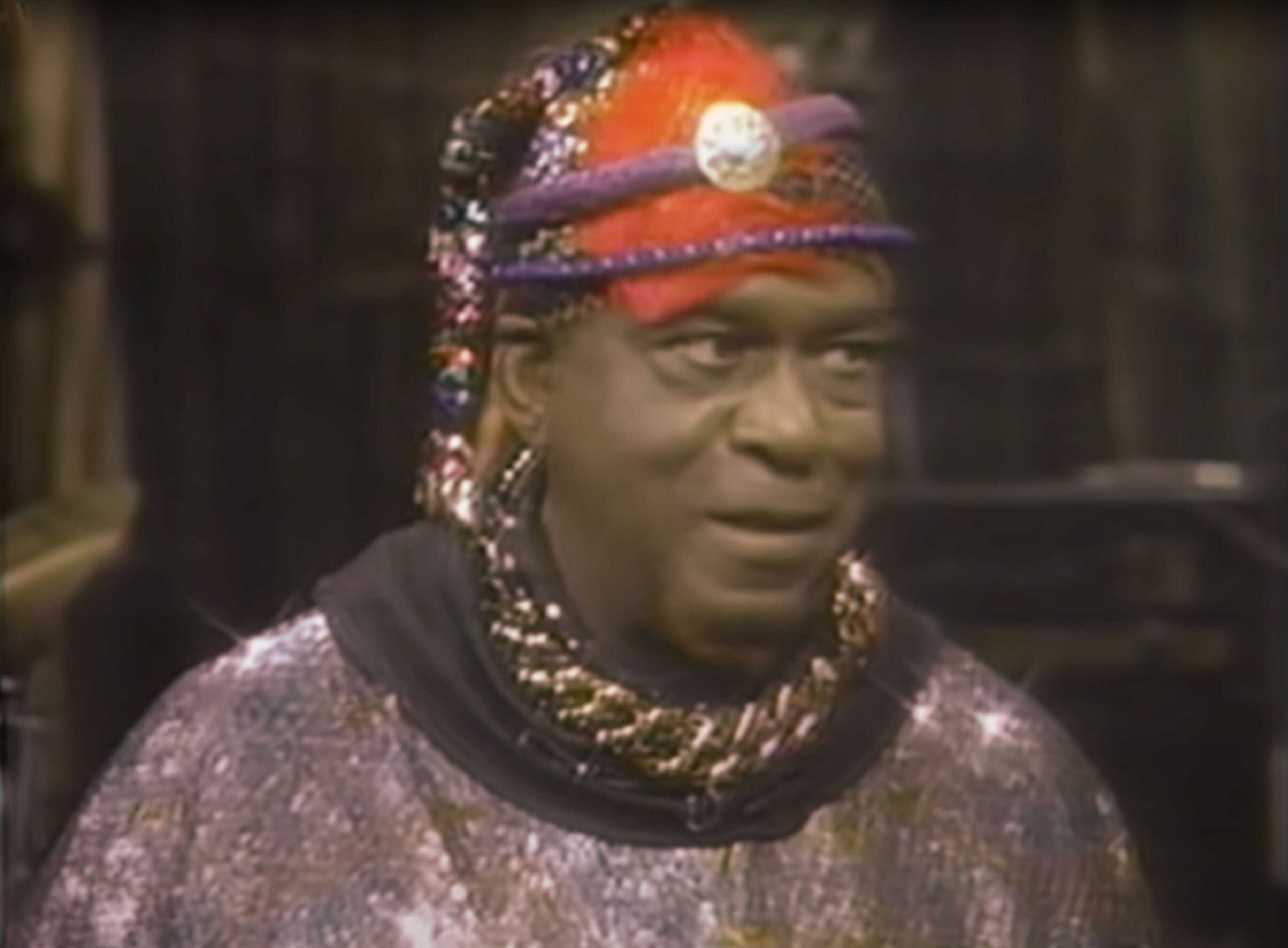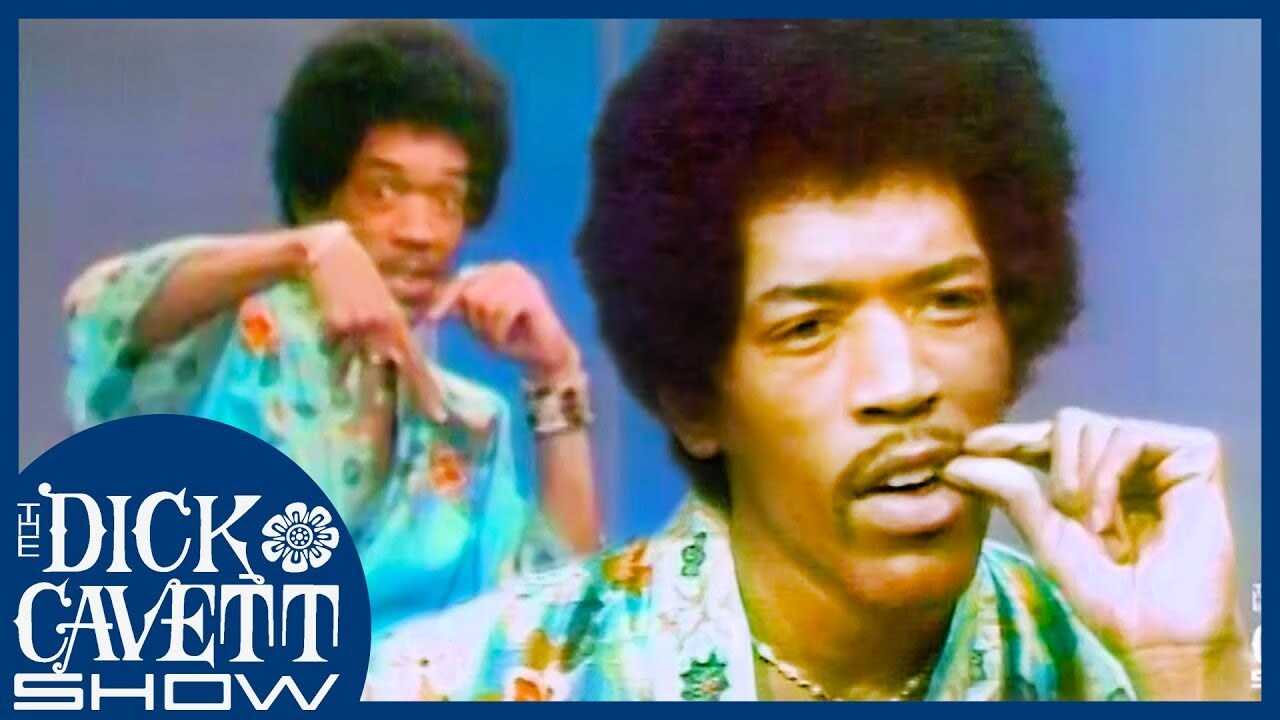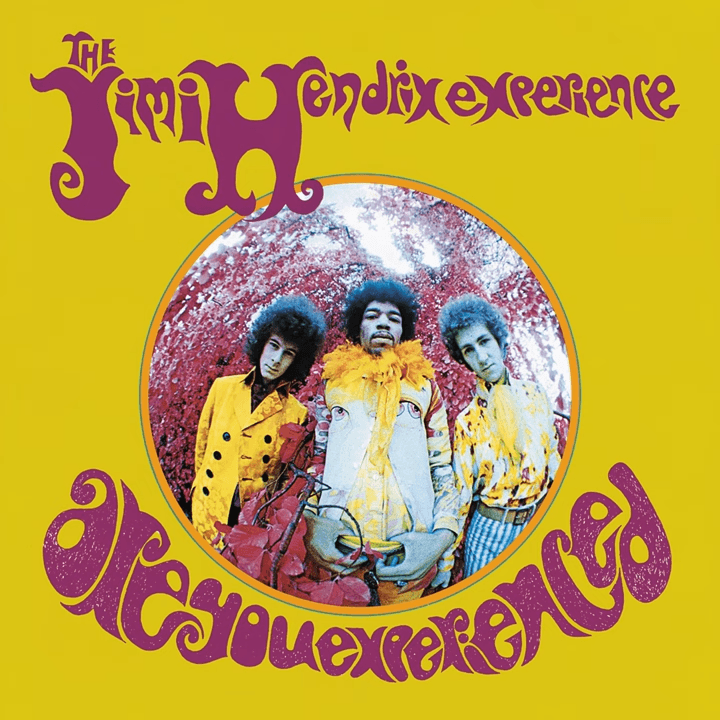Sonic Architects
Innovation is crucial to the creation of music because it pushes the art form forward while simultaneously broadening the dimensions of the art and culture that fosters and supports the music. These sonic architects embrace the principles of Afrofuturism, innovating popular music with the creation of new sounds and new genres, and utilizing technology to design seemingly infinite musical landscapes. While innovation remains a hallmark of Black music making, a cadre of musicians have utilized Afrofuturism’s sonic platform to tell their musical stories and outline their visions for new musical futures.
Sun Ra and His Arkestra
Sun Ra, 1968
Adorned in self-designed, futuristic garb and naming himself after the Egyptian God of the Sun, Sun Ra (1914–1993) was a jazz composer, bandleader, musician, and philosopher. His avant-garde, experimental music and autogenous and iconic persona laid the groundwork for musical Afrofuturism. Born Herman Poole “Sunny” Blount in Birmingham, Alabama, he became Le Sony’r Ra, aka Sun Ra, after experiencing a personal awakening. Afterwards, he declared himself an alien from Saturn on a cosmic, spiritual, and artistic mission of peace and liberation for African Americans and all humankind. With a persona meant to characterize the alienated and displaced role African Americans held in society, Sun Ra’s music, image, and philosophy introduced a new platform to interpret the reality, dreams, and experiences of Black Americans.

I came from a dream of a Black man long ago.
Sun Ra
The Arkestra
Marshall Allen (b. 1924) has led The Arkestra since Sun Ra’s passing in 1993
Sun Ra’s music portrayed an image of liberated Black people unimpeded by racism and societal constructs. A free jazz pioneer, his music and accompanying philosophy delved into the history, mythology, and iconography of ancient Egypt, while also conveying a fascination with space exploration and futurism. One of the most prolific composers of the 20th century, Sun Ra also embraced new technologies and pioneered the use of synthesizers to create unique soundscapes.
The Arkestra is Sun Ra’s orchestra. As he developed his musical ideas and Afrofuturist ideology, he envisioned the Arkestra as the artistic vessel for his mission and a visual symbol of African-inspired unity and pride. Beginning in the early 1950s, the Arkestra has had a rotating cast of musicians, including saxophonists John Gilmore and Danny Davis, drummer Luqman Ali, singer June Tyson, and bandleader and saxophonist Marshall Allen.
Featured Video
Sun Ra Interview and Performance
A 1989 interview and performance by the Sun Ra Arkestra on "Night Music", featuring the songs “Retrospect” and “Face the Music.”

Jimi Hendrix
Jimi Hendrix performing at Madison Square Garden
Jimi Hendrix (1942–1970) changed the style and direction of popular music by expanding the sonic vocabulary of the electric guitar in exponential and unforeseen ways. A generational artist, Hendryx’s guitar playing had a seismic effect on musicians across genres, incorporating elements of music’s past, present, and future in his style to become the most influential electric guitarist of the century. As a songwriter, Hendrix further established an Afrofuturist musical aesthetic with lyrics about the future, the cosmos, liberation from migration, alien life, and African mysticism while utilizing and pioneering studio effects technology to create his music.

Imagination is the key to my lyrics. The rest is painted with a little science fiction.
Jimi Hendrix
Featured Video
Jimi Hendrix in a silk kimono on “The Dick Cavett Show”
Never opting for the standard suit and tie, Hendrix was a fashion icon of the psychedelic 1960s. He wore this silk kimono during his September 9, 1969, interview on “The Dick Cavett Show.” The appearance of a Black man dressed so freely during the civil rights era made a powerful impression on viewers, including a young Vernon Reid of the rock band, Living Colour. “It was very powerful, because you just didn’t see Black people at all on television . . . we didn’t exist in the media,” Reid said.
Using Pedals to Create a Canvas of Sound
Hendrix performs with effects pedals on stage, in Harlem, 1969.
Played on stage and in recording studios, the ever-evolving technology of guitar effects pedals permanently altered the sound and scope of rock guitar. Creating a canvas of electronic sound, Hendrix pioneered the use of pedals and used them to distort his guitar tone and produce radically different sounds—from the swooshing sound of a helicopter propeller to the cry of human pain heard on the song “Machine Gun.”
Featured Video
“Third Stone from the Sun” by The Jimi Hendrix Experience
This song, from the album "Are You Experienced", is from The Jimi Hendrix Experience, with Jimi Hendrix on guitar and vocals, Noel Redding on bass and backing vocals, and Mitch Mitchell on drums and backing vocals.



